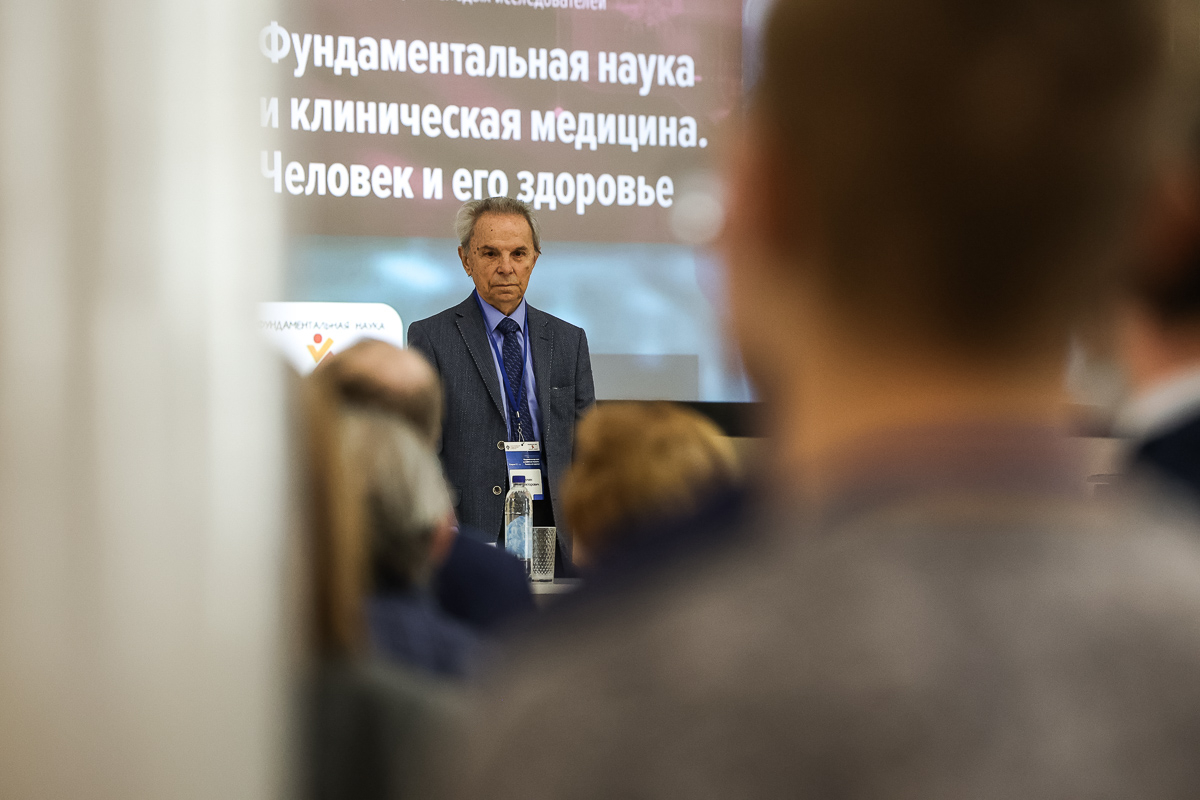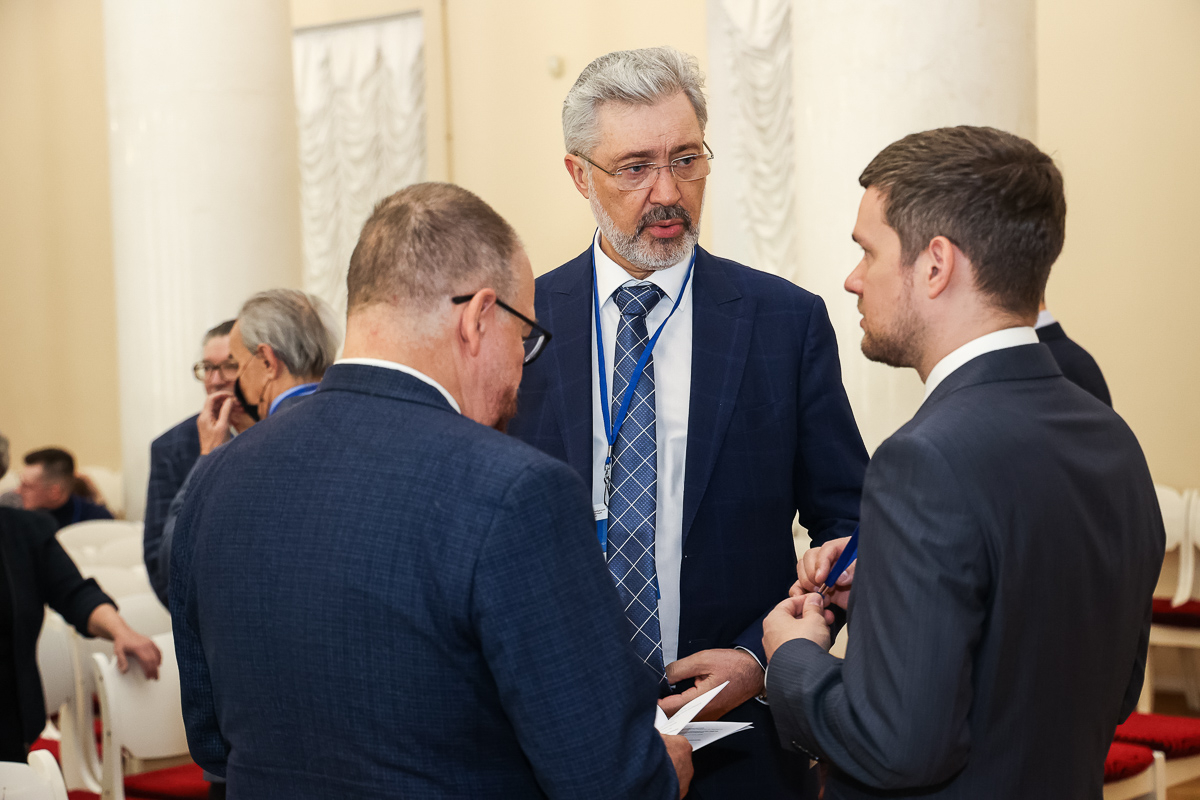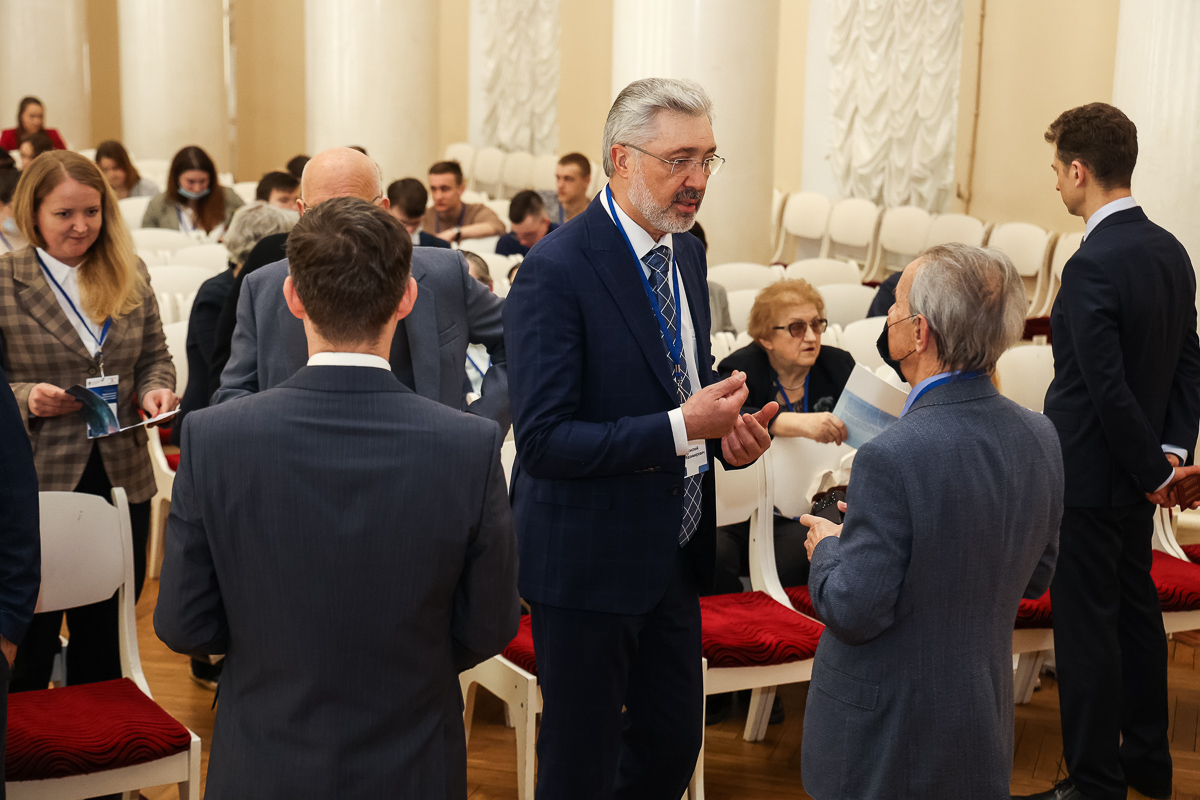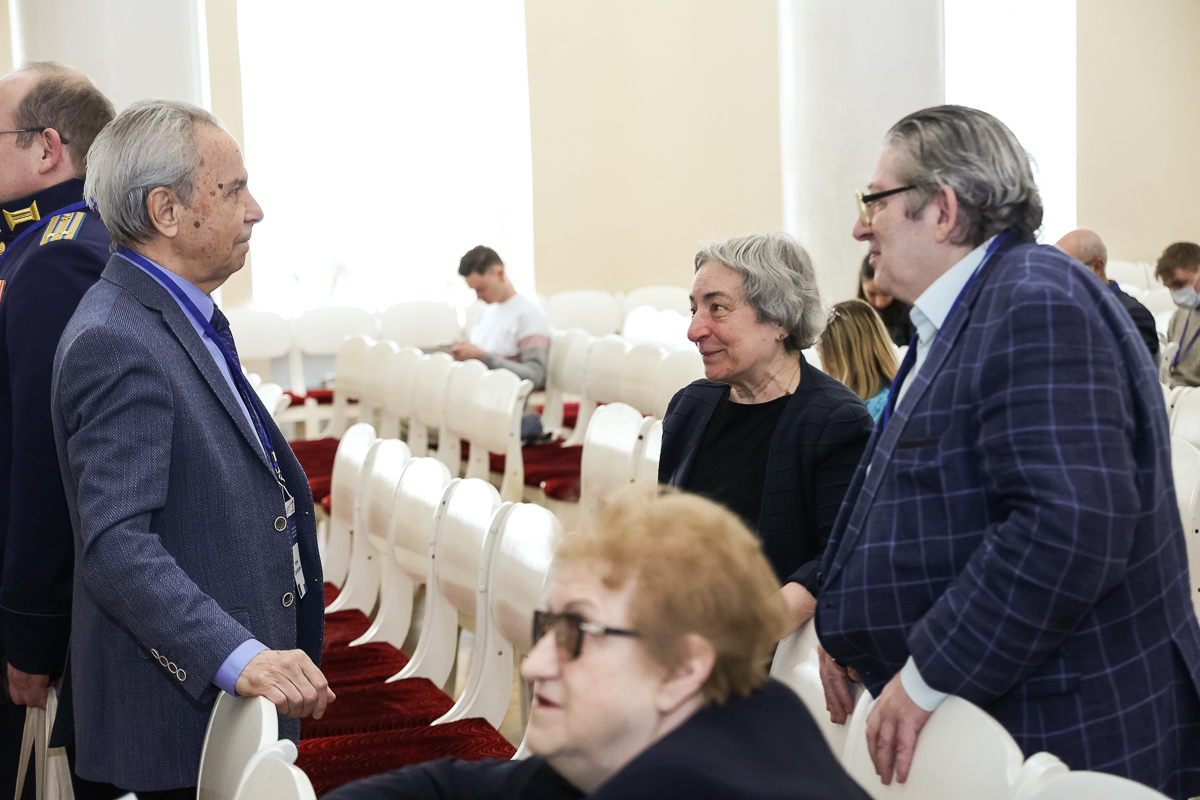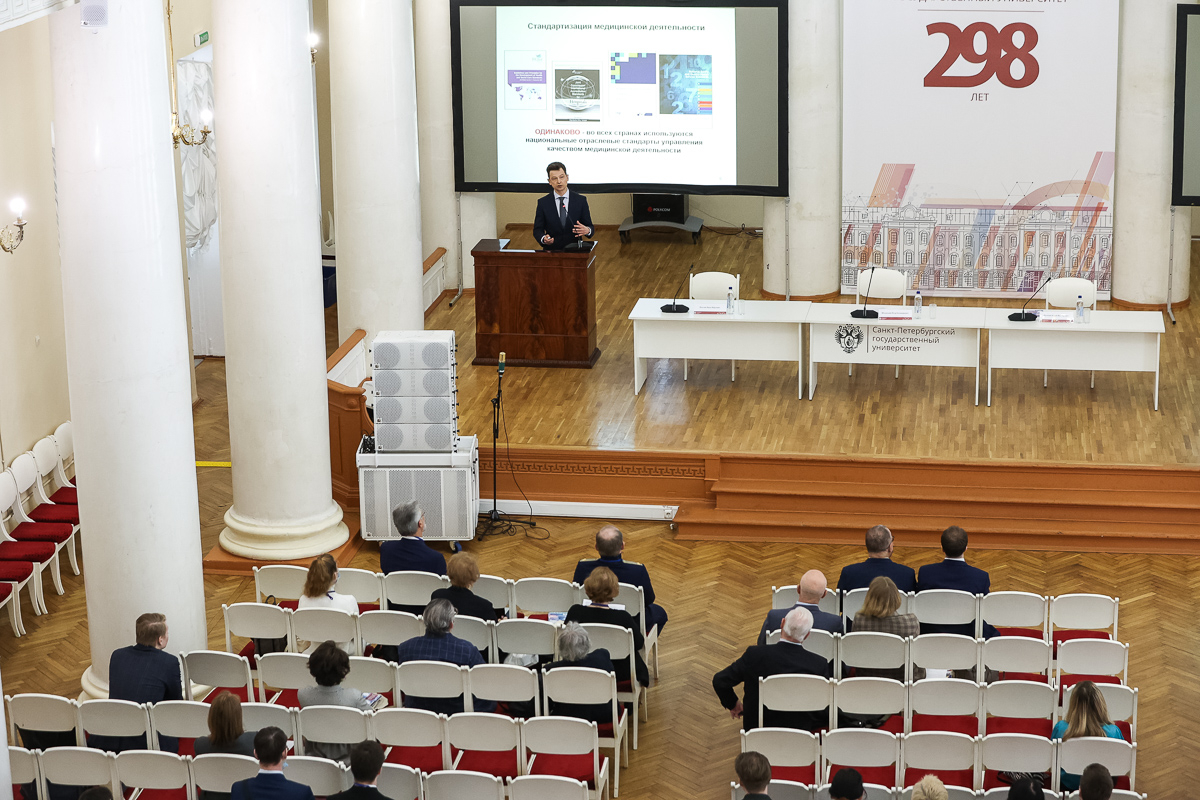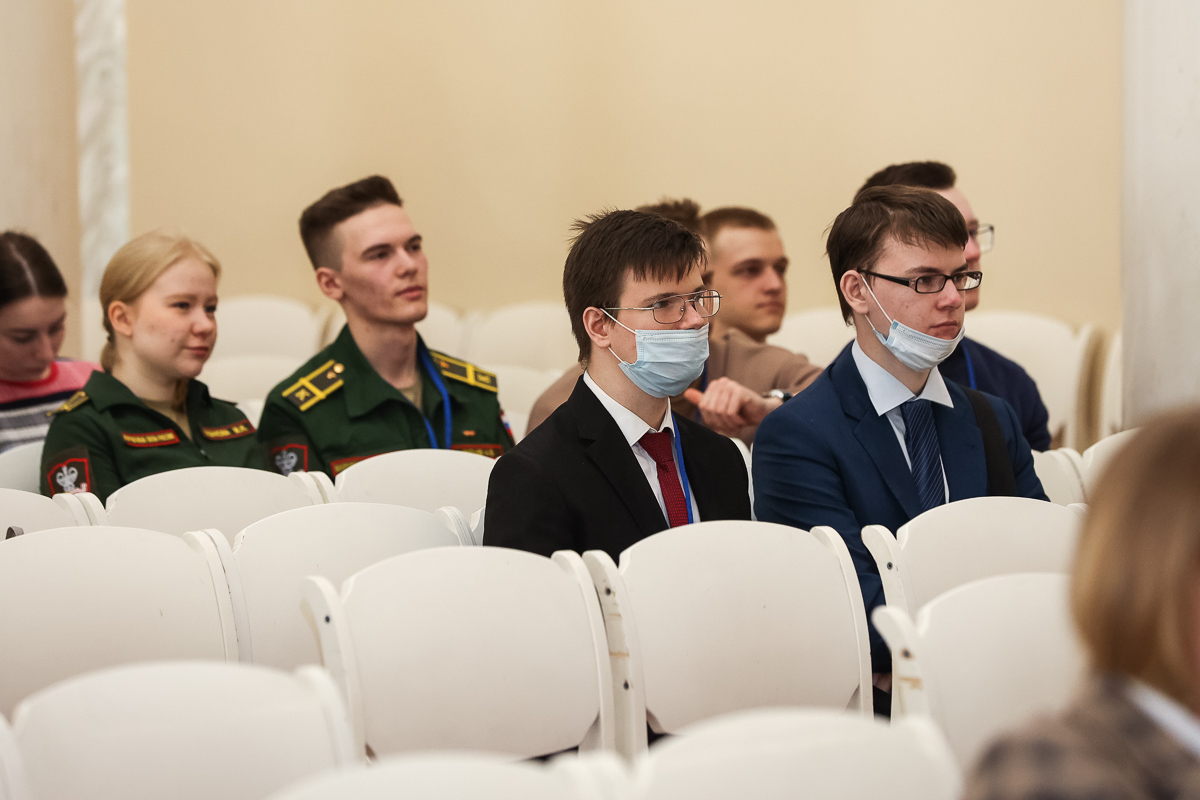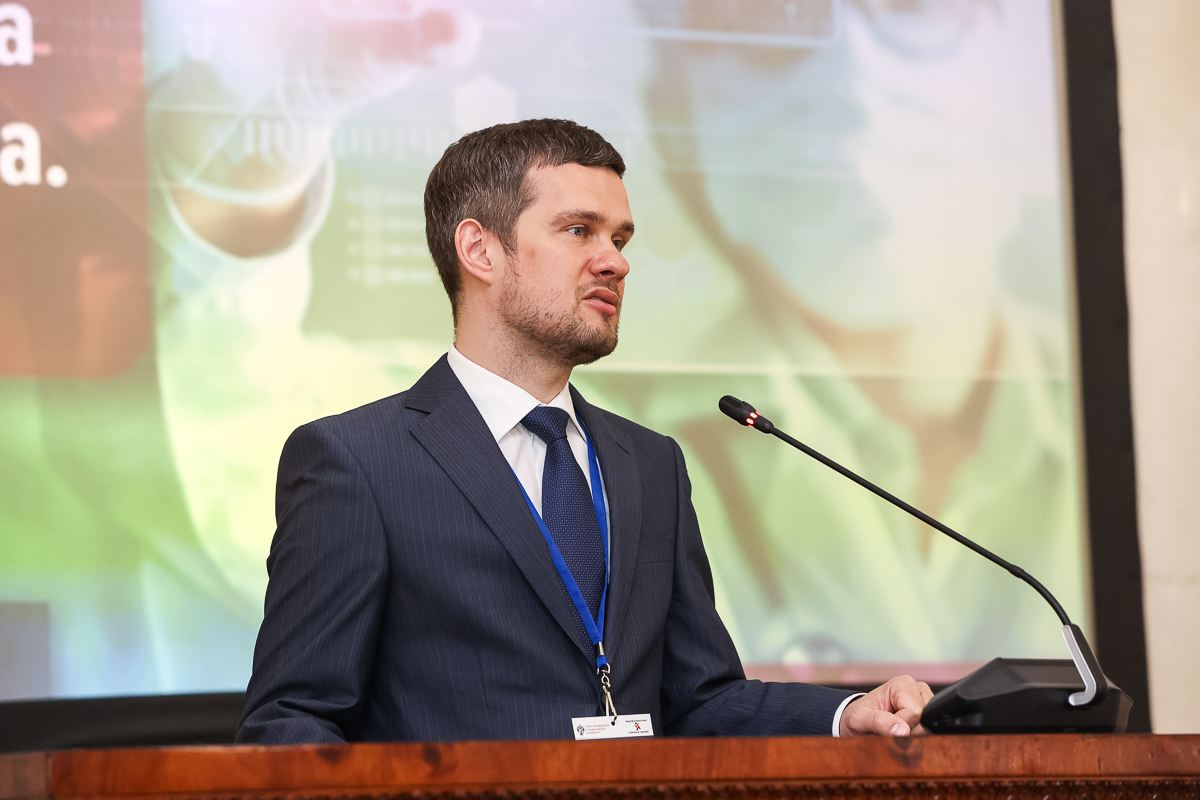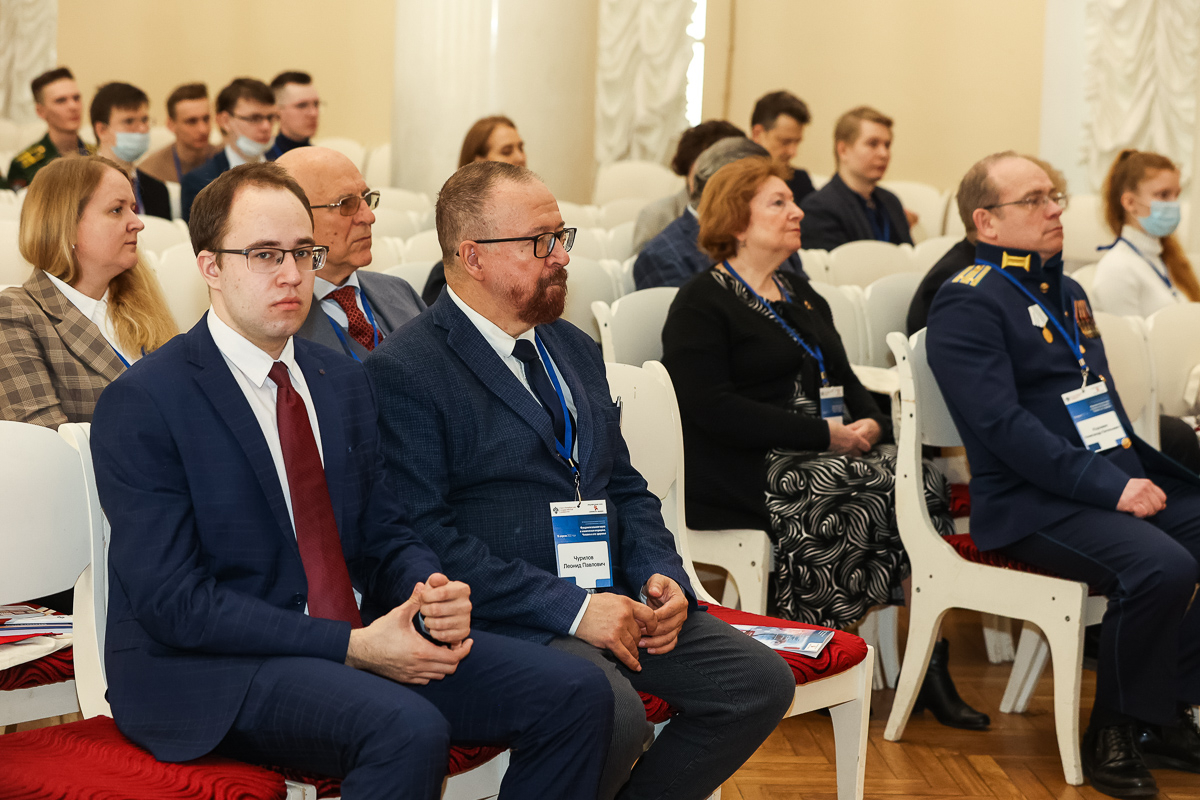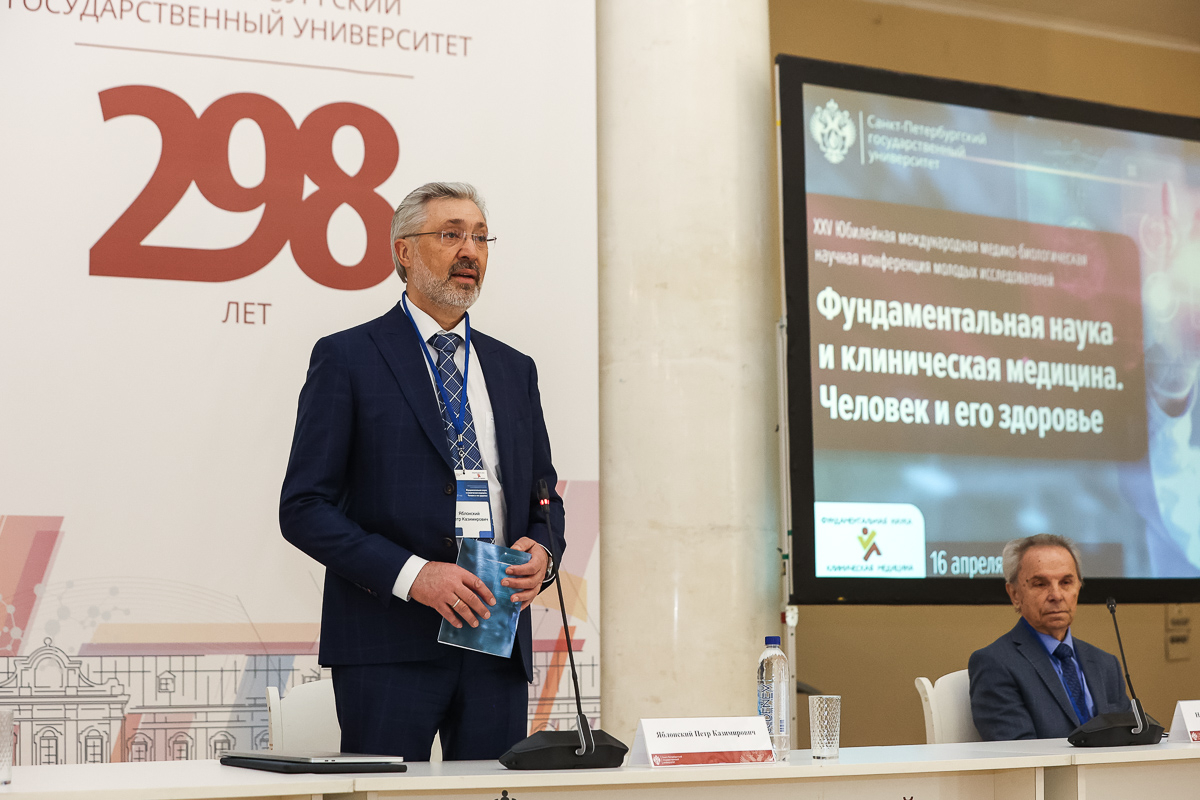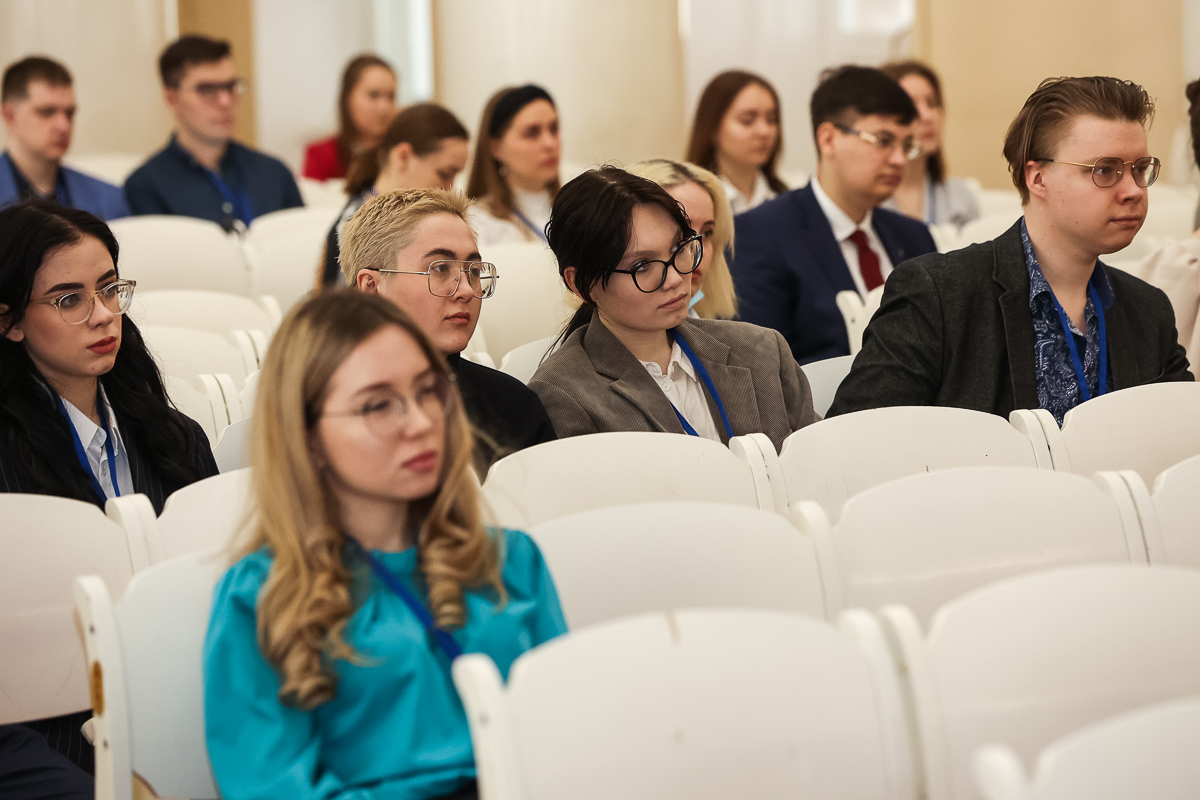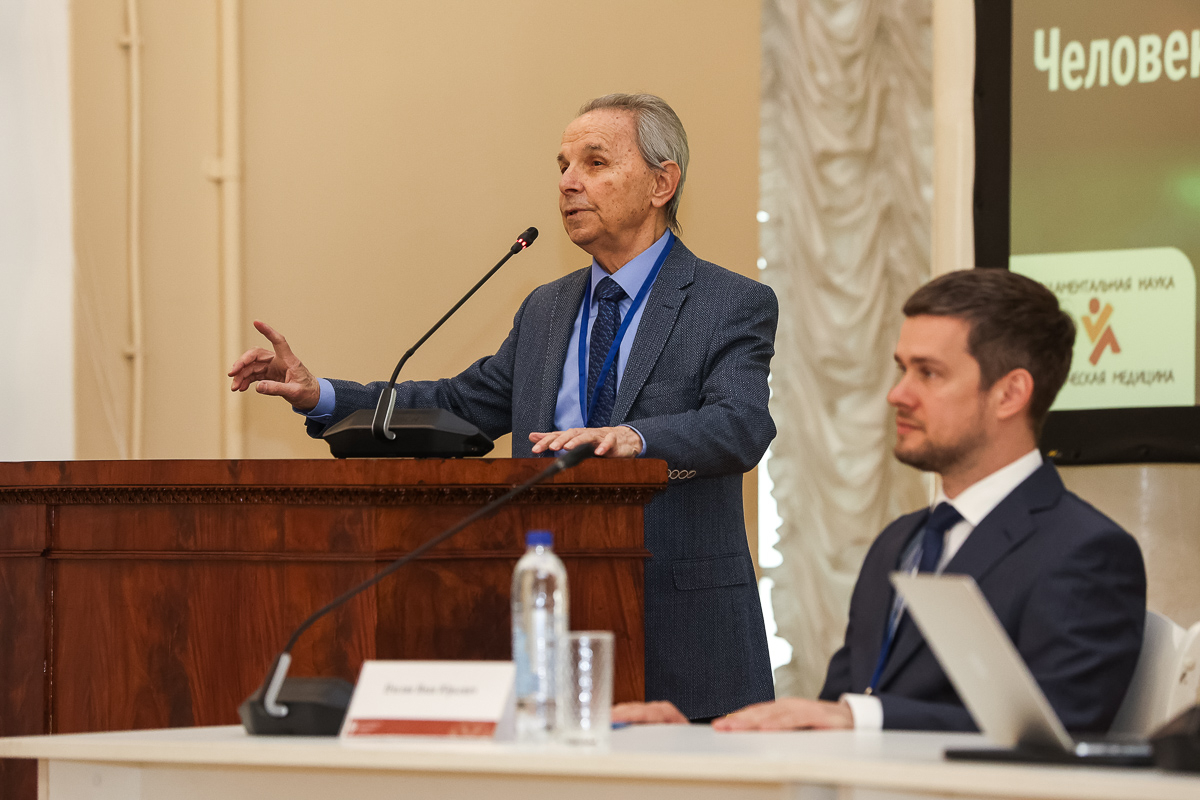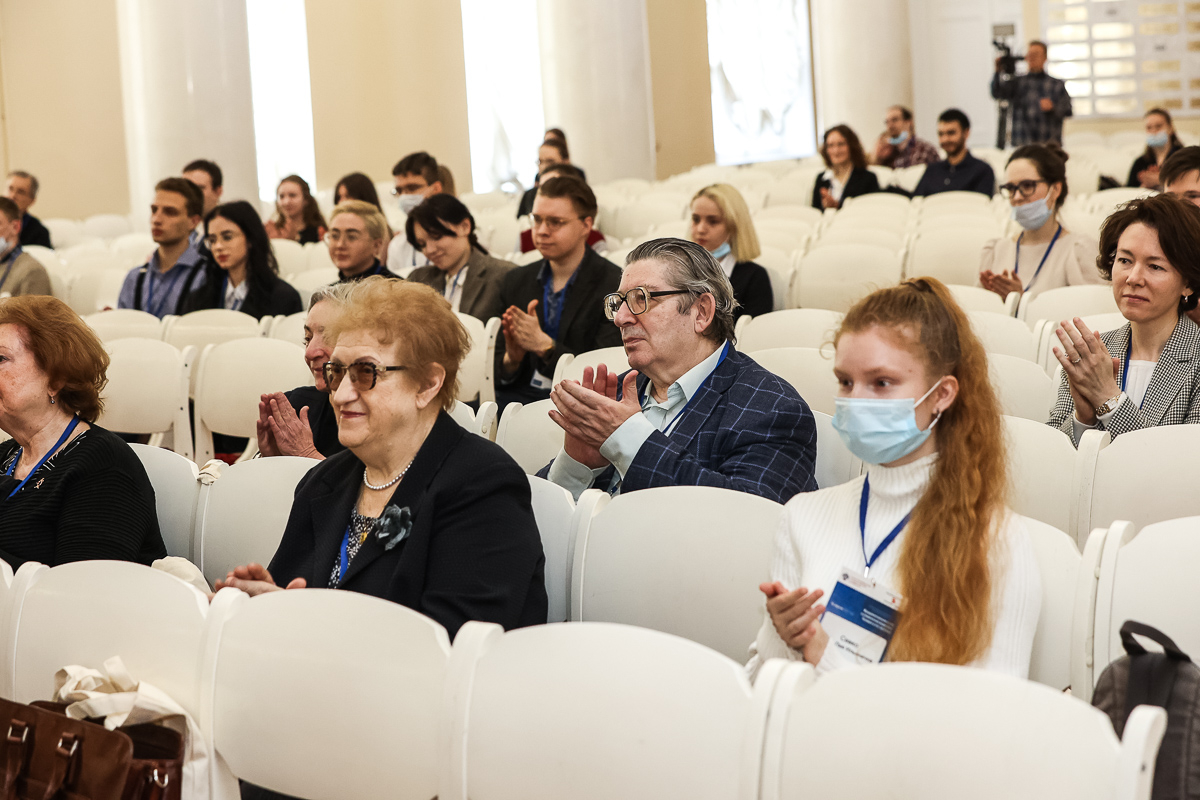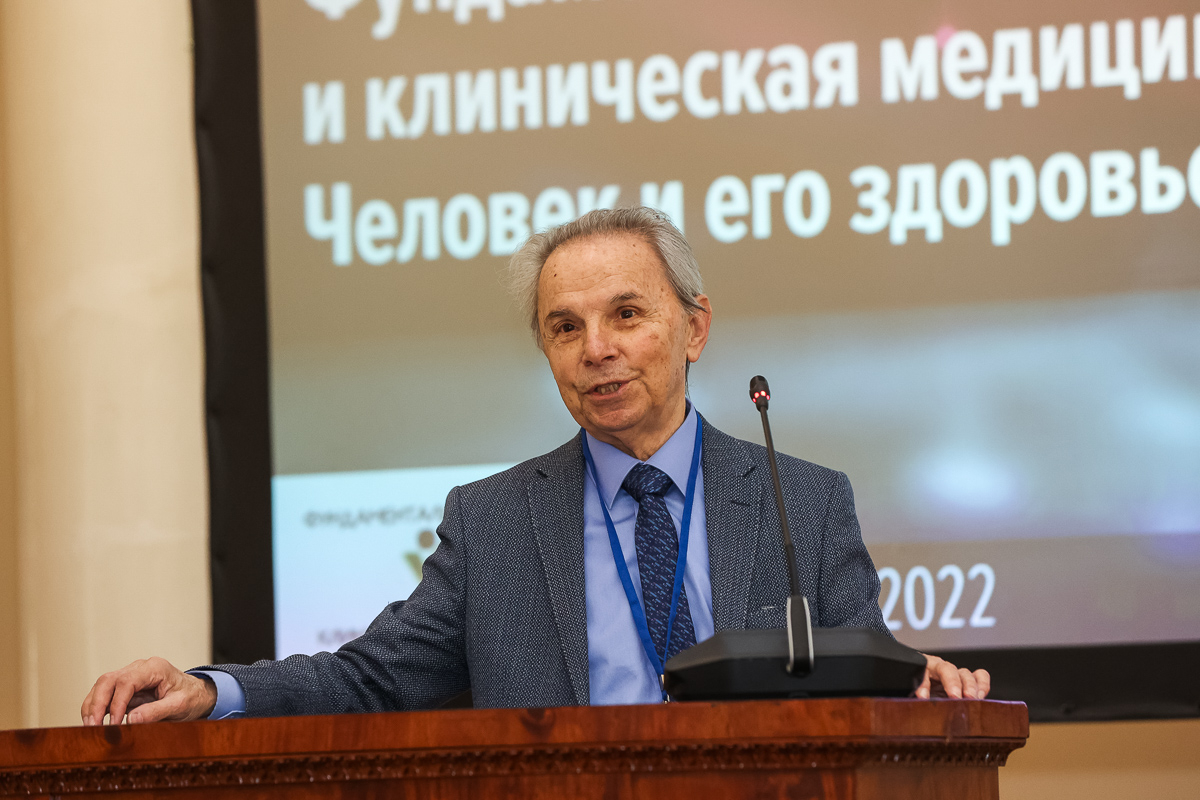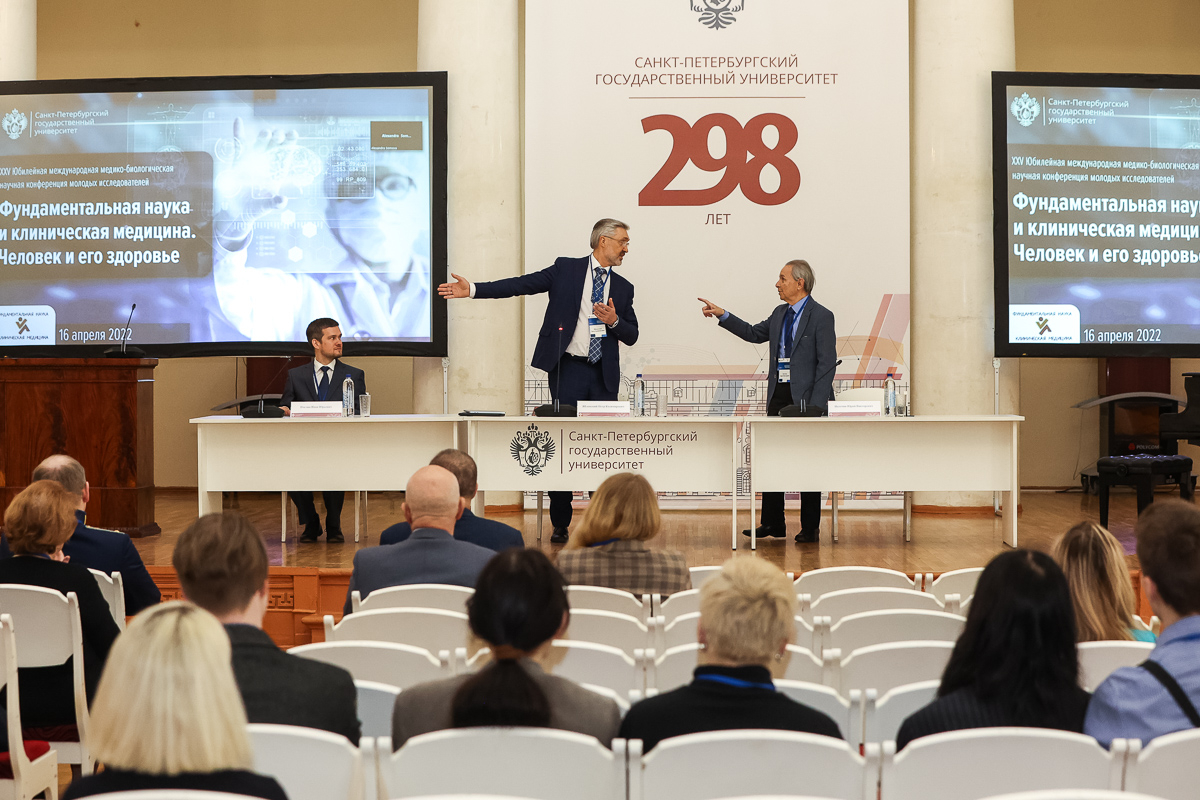St Petersburg University holds 25th Biomedical Research Conference for Young Scientists
The 25th International Biomedical Research Conference "Fundamental Science and Clinical Medicine. Homo and Health" has been held at St Petersburg University.
The conference has assembled over 450 young researchers, students, doctoral students, reputable scientists, experts, and doctors from 11 countries across the globe.
The plenary speakers included: Professor Viktor Kashchenko, Head of the Department of Faculty Surgery at St Petersburg University and also Deputy Director General for Scientific and Educational Work and Chief Surgeon at the Sokolov Northwestern District Scientific and Clinical Centre; Professor Sebastiano Venturi from the Department of Hygiene and Public Health, Rimini, Italy; and Professor Aleksandr Prilutsky, Head of the Department of Clinical Immunology, Allergology and Endocrinology at Donetsk National Medical University.
The conference was launched 25 years ago as an annual event by Yuri Natochin, Member of the Russian Academy of Sciences, Honorary Professor of St Petersburg University, the organiser and first Dean of the Faculty of Medicine at St Petersburg University
About 234 million surgeries are performed worldwide every year, 10% of which involve postoperative complications. Global estimates suggest that complications following surgery kill more people than road accidents. Thus, about 120,000 people per year are estimated to die from medical errors in the USA. According to experts, to reverse this situation, a clinical decision support system to improve the overall safety and quality of health care delivery is to be implemented. ‘If we look at the work of a pilot, it is necessarily supported by an onboard pilot decision aid system. Flight control software reads the aircraft’s current speed, pose, height, and location. Hence, aviation safety has been significantly improved; with a staggering reduction in the numbers of both fatal accidents and fatalities,’ emphasised Viktor Kashchenko.
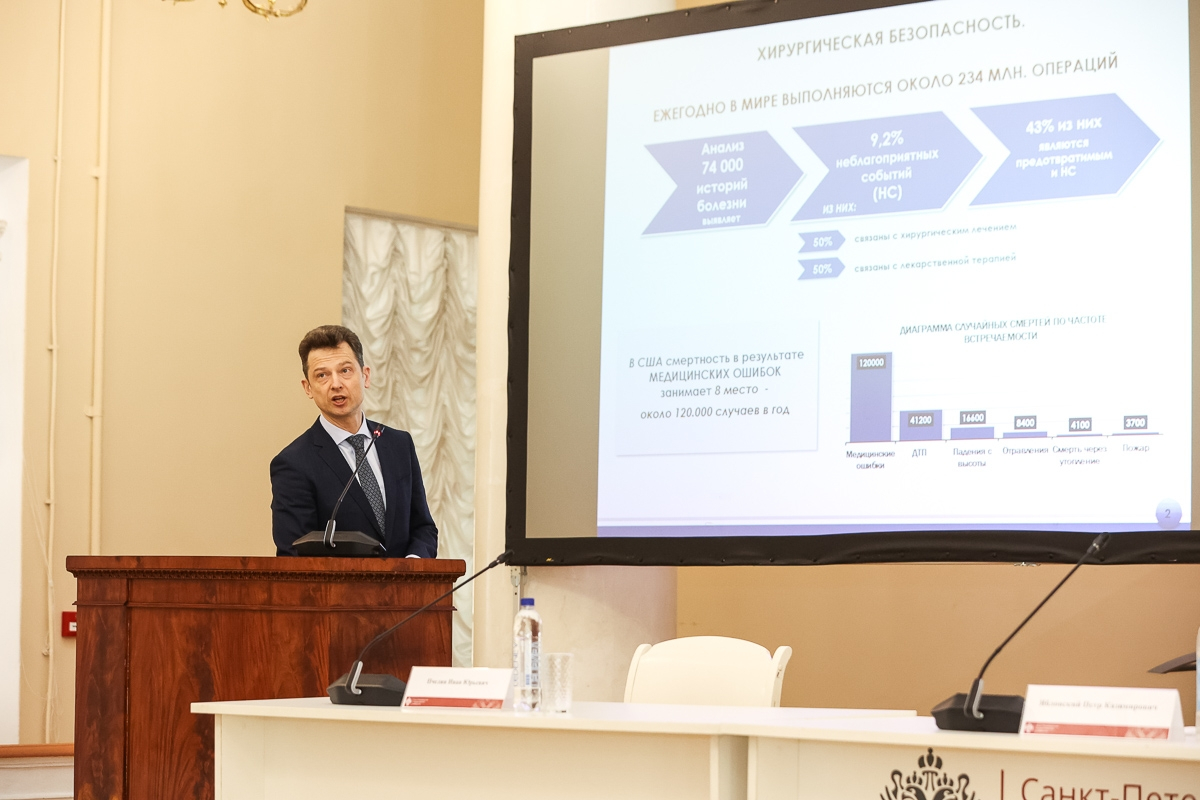
The experts propose to introduce a similar safety and quality of decision support system into the work of healthcare professionals. Professor Kashchenko presented the concept of safe surgery and specified key components of this concept: standardisation of procedures; strict adherence to Clinical Practice Guidelines; and improvement of surgical techniques. According to Viktor Kashchenko, the so-called Swiss cheese model of risk management should be effectively introduced in surgical care. In this model, hazards are prevented by a series of barriers, represented as slices of Swiss cheese, stacked side by side. The more layers of protection, the less likely it is that a hazard may pass through holes in all of the slices, leading to a failure. The Swiss cheese safety model is applicable to any complex system, including surgical care. Dr Kashchenko’s team has already proven the effectiveness of this approach in their work. Thus, they use a surgical safety checklist, the essence of which is that the operating team cannot proceed to the next step unless they are convinced that the previous step has been performed 100% correctly and has not caused adverse effects. It may seem a simple solution but it can actually lead to a significant — up 40% — decrease in mortality. ‘The reason for this is that it is not just strict adherence to the guidelines, but also a different level of interaction between the members of the operating team,’ Professor Kashchenko explained.
Another important element of the clinical decision support system is computer-assisted preoperative modelling. Modern technologies enable surgeons not only to plan, but also to rehearse upcoming operations using preoperative simulation models. Augmented reality technologies are used for these purposes. In addition, the latest technologies are employed to support intraoperative navigation, visualisation and control of blood supply of organs and tissues.
Professor Sebastiano Venturi delivered a lecture on disaster medicine and diseases associated with radiation exposure. It is not infrequent that in the event of accidents in nuclear facilities, release of radioactive iodine (iodine-131) may occur. Exposure to radioactive iodine may cause damage to the thyroid, leading to: thyroiditis; hypothyroidism; and even thyroid cancer. Additionally, iodine deficiency is associated with the development of dementia. Exposure to radioactive isotopes of caesium (caesium −137) can lead to increased risk of pancreatitis and diabetes. Moreover, after radiological releases, children are more at risk from exposure to and contamination with certain radionuclides than adults. Sebastiano Venturi stressed the importance for doctors of various specialties to know and be able to minimise the adverse effects of radioactive exposure. Today, physicians around the world recommend during nuclear or radiological emergencies taking potassium iodide with stable iodine to block the uptake of radioactive iodine by the thyroid gland. This helps to reduce exposure of the thyroid to internal radiation, providing up to a 99% damage reduction. In the event of exposure to radioactive caesium, the use of Prussian blue (potassium hexacyanoferrate) is recommended. By binding with the radioactive particles, while they are in the intestines, Prussian blue captures the isotopes and causes them to be eliminated from the body. This is a dark blue pigment accidentally created by combining iron sulphate and potash. The compound was first synthesised in the 18th century. Today, it is well-known as an antidote for certain kinds of heavy metal poisoning.
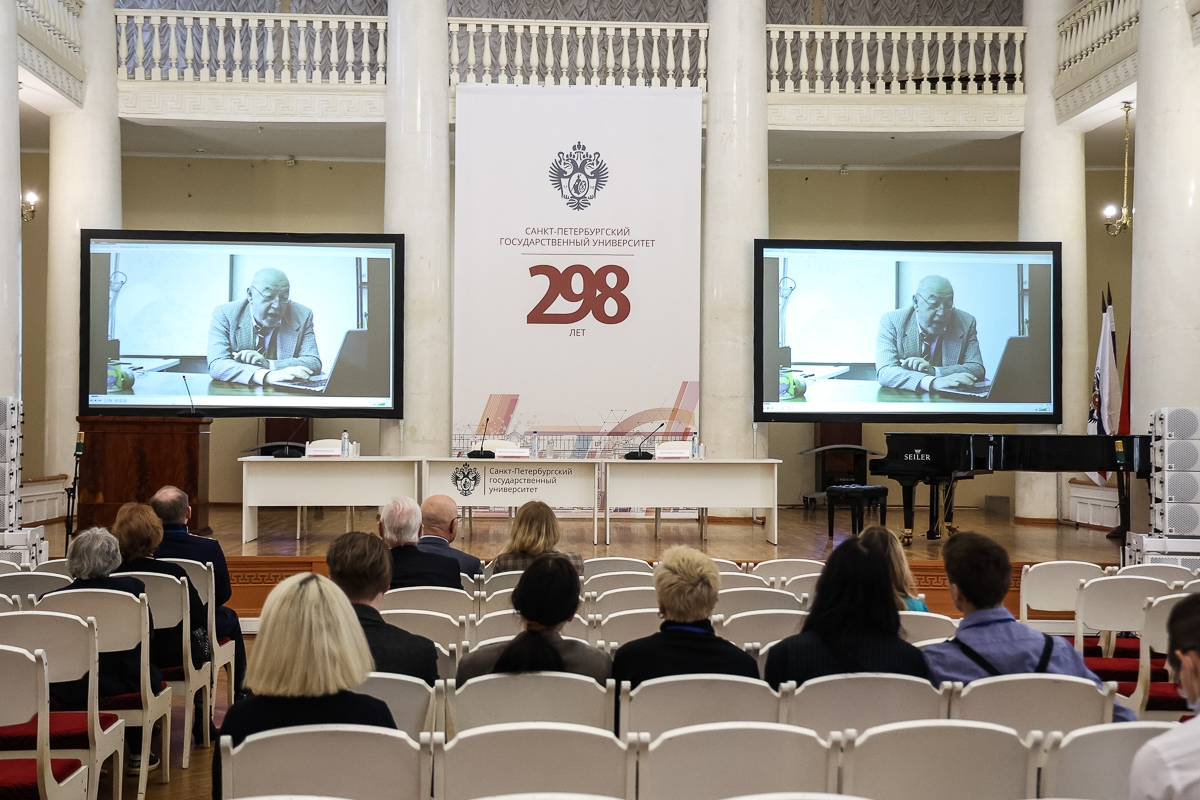
Plenary speaker Professor Aleksandr Prilutsky spoke about prevention and treatment of allergies. According to Professor Prilutsky, today food allergy affects up to 10% of the world population. Over the past decades, the number of patients has almost doubled, and the incidence of allergy is increasing. People usually think that food allergies symptoms include: skin redness; itching; and rhinitis associated with food intake. However, possible symptoms and manifestations of food allergies are numerous and diverse depending on the type of disease. Thus, there are food allergies that involve humoral immune responses mediated by immunoglobulin E (IgE). IgE-mediated food-allergic reactions occur when patients develop allergen-specific IgE antibodies after ingestion of some food, for example, nuts, eggs, or citrus fruits. The symptoms of IgE-mediated food allergy include: rhinitis, conjunctivitis, urticaria, mucosal oedema, and even anaphylactic shock, that is, acute circulatory failure leading to cellular and tissue hypoxia resulting in cellular death and dysfunction of vital organs. Another type of food allergy involves cellular immune response mediated by T-lymphocytes. The symptoms of T-cell-mediated food allergy include: abdominal pain, nausea, cramping, and other gastrointestinal manifestations.
Peanuts, tree nuts, eggs, milk, wheat, fish, shellfish and soy cause about 80% of food allergic reactions. Indeed, scientists emphasise that there are no ‘bad’ foods. The fact of the matter is that some individuals are genetically susceptible to food allergies, which are the result of an immune-mediated adverse reaction to normally innocuous food. There are regional, age- and gender-dependent, and even racial differences in the food allergy prevalence. Still, genetic predisposition plays a key role in the development of food allergy. Thus, for example, coeliac disease is a genetic — and often hereditary — autoimmune disorder triggered by consuming a protein called gluten, which is found in wheat and related types of cereals.
There are no "bad" foods. The fact of the matter is that some individuals are genetically susceptible to food allergies, which are the result of an immune-mediated adverse reaction to normally innocuous food.
Despite the difficulty of diagnosing food allergies, it is best to start simple. It is recommended to stop eating foods that may cause an unpleasant reaction. Additionally, you can do the IgE blood test and the allergy skin test. Finding the "culprit" food and starting timely treatment are associated with a more favourable prognosis. ‘Also, more novel therapeutic drugs to treat allergies have been introduced in recent years,’ said Professor Prilutsky.
The Conference plenary meeting was followed by ten panel sessions focused on the main areas of medicine, including: Physiology and Molecular Medicine; Microbiology; Virology and Infectology; Surgery and Oncology; Internal Medicine; Neuropathology and Psychiatry; Maternal and Child Health; Immunology and Allergology; Pathophysiology and Experimental Biology; Morphology and Pathomorphology; and Public Health and Social Medicine. This year, the last panel session featured a special seminar — "Medicine confronts terrorism and crime". In total, over 60 oral presentations were made. The poster session was held in electronic format. As a result of the conference, the participants were awarded honorary diplomas in 11 nominations.


